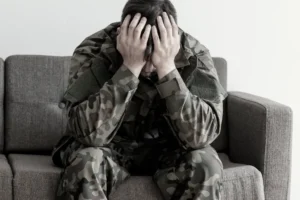Shame – Introduction and Definition
Shame is a deeply uncomfortable emotion that many of us have encountered at some point in our lives. It can be triggered by actions, thoughts, or situations or even immutable personal features (such as bodily features, sexual identity) that make us feel as though we’ve fallen short of societal expectations or our own moral standards.
Shame is often experienced as a negative emotion, we may feel embarrassed, inferior, plain wrong or not good enough. At the same time, shame serves important social and psychological functions. While mild shame (Embarrasment) may be a fleeting feeling, there are more intense and longer lasting forms. Shame can impact how we view ourselves and how we think others perceive us in a variety of ways.
The seven components of shame describe how shame arises in us the resulting behaviours and how the emotion helps us navigating relationships to ourselves and others.
Definition
Shame is an unpleasant emotion associated with high self-awareness, a critical self-evaluation and autonomous activation of the nervous system.
The Seven Components of Shame
The experience of shame can be analyzed by looking into seven different components, which describe the environment, functions, internal processes and resulting behaviours:
- Context, Triggers and Reactions (Facts) – What was actually going on?
- Function – How shame helps us navigating our relationship to ourselves and others
- Imagined Social Evaluation – How we expect others to react
- Self-Evaluation / Self-Blaming – How we judge ourselves
- Physiological Reaction – How our body and our nervous system react
- (Additional) Emotions – Other emotions involved
- Behaviour – What we do as a reaction to the shame.
Analyzing Shame – The Seven Components in Detail
The main components are based on the works of Paul Gilbert. Two further components have been added: “Context, Trigger & Reactions (Facts)” indicates that shame refers to real or imagined events within a relational context. “Function” was added to indicate that shame has a function in navigating contact and relationship quality.

Context, Triggers and Reactions (Facts)
The emotional response shame is linked to objective facts – actual events in a social environment:
- The context includes the situation and relationships: a student answering in class, an employee reporting to a supervisor, or a friend within a peer group.
- The quality of these relationships, the relative social status as well as the position within the social or organisational hierarchy can shape how vulnerable we feel to shame.
- Triggers refers to the real-world circumstances that trigger the emotion: forgetting a key detail during a presentation, spilling coffee on yourself in a meeting, being corrected in front of others, or noticing a personal trait that doesn’t fit in (such as appearance, accent, or clothing).
- This includes what actually happened, such as one’s own specific behaviours, actions or attributes. Was there an actual misstep? Was something exposed? In the case of a shame sensitive person, the trigger may be relatively small or almost non-existent.
- The actual reactions of others can significantly influence the intensity and nature of the shame felt by the individual.
- The emotional reaction may relate to explicit (e.g. actually expressed criticism, judgment, teasing or even indifference) or implicitly reactions of others (e.g. subtle cues such as a raised eyebrow, a laugh, or simply being left out of the conversation).
When reviewing the facts it is important to note that human memory does not function like a video camera. For example, you might recall your joke falling flat and assume everyone thought you were foolish, whereas others may have barely noticed. Similarly, your own account may differ from how another person describes the same moment. Therefore we have to distinguish between the factual events (as much as they can be described objectively and factually) and the subjective perception and interpretation of those events.
Context, Triggers and Reactions (Facts)
Shame usually requires a trigger. Therefore it is important to distinguish between factual events and the individual’s perception and reaction to those events.Guiding Question:
What happened? What was actually going on?
Function of Shame
Shame plays a crucial role in how individuals navigate social relationships and maintain their status within a group.
Shame acts as a regulatory emotion, helping individuals balance the need for dignity and autonomy with the desire for contact and belonging. Shame can function as a signal, alerting individuals to the risk of social rejection or disapproval. It can also serve as a motivator for behavioural change, encouraging actions that conform to social norms and expectations.
At the same time, shame shapes one’s relationship to oneself—it influences self-perception, self-worth, and identity. In some cases, shame can foster personal growth, prompting reflection and change. However, if unresolved or overwhelming, it may lead to social withdrawal, self-criticism, or persistent feelings of unworthiness.
Function of Shame
Shame functions as a social regulator. It can help maintain relationships and social order, but it can also create barriers to connection and self-acceptance.Guiding Question:
How does shame influence your interactions with others and your sense of self?
Imagined Social Evaluation
Shame is tied to the sense of being seen and judged – whether or not anyone is actually watching.
This component relates to cognitive processes related to imagining facing the judgement of others: We become aware of how we might appear to others, believing we have failed to live up to others’ expectations or moral values. We may picture ourselves in the spotlight under the gaze of others, exposed and vulnerable to their evaluation, and may imagine their verbal or non-verbal judgement or punishment.
- Shame is related not just to the actual reactions and judgments of others, but even more so to the imagined reactions and feared future behaviours of others.
- Shame is therefore shaped by our own assumptions, fears, and projections about how others might view us.
We worry about falling short in the eyes of others, and this imagined “audience” can feel as powerful as actual people. These internalized evaluations tie shame to the fear of social rejection, the fear of being judged negatively by others. Gilbert (2002) refers to this as the “social or external cognitive component.”
Imagined Social Evaluation
Shame is related to the belief that others may judge our behaviour harshly or view us as inferior or worthless. We notice that we fall short of others expectations or moral values.Guiding question:
How do you expect others to react to you in the situation?
Self-Evaluation / Self-Blaming
Shame is related to our own reaction to ourselves: Individuals judge themselves when they are experiencing shame.
This component relates to the cognitive process of self-evaluation: self-criticism (negative self-critical inner dialogue) leads to a negative feeling about oneself. This aspect of shame is based on one’s own norms, ideals, and values, not on the values or reactions of other people.
- Situation-related self-evaluation can contribute to milder forms of shame, such as embarrassment.
- Regular negative self-evaluation is part of toxic shame. This can reinforce feelings of being profoundly inadequate, incompetent, or worthless, contributing to diminished self-esteem.
Gilbert (2002) refers to this component of shame as the “internal self-evaluative component”.
Self-Evaluation / Self-Blaming:
Shame is related to our own judgement of ourselves. We notice that we fall short of our own expectations and moral values.Guiding Question:
How do you evaluate yourself your own behaviour or trait?
Imagined Social Evaluation vs. Self-Evaluation / Self-Blaming
|
Imagined |
Self-Evaluation / | |
|---|---|---|
|
Representational System |
|
|
|
Value System |
|
|
|
Time-relations |
|
|
Physiological Reaction
The emotion shame involves a neurophysiological reaction of the body and the nervous system: This reaction reflects the body’s response of the body and the nervous system, which can vary depending on its intensity.
- In milder cases (embarrasment), the sympathetic nervous system is activated, leading to physical signs such as blushing or sweating (“Red Shame”)
- In the case of more intense shame, the parasympathetic response might take over, resulting in symptoms like going pale or even feeling a sense of collapse (“White Shame”)
These physical reactions are the body’s way of responding to the acute stress associated with shame. Gilbert (2002) refers to this component of shame as the “physiological component”.
Nervous System Response:
Shame involves a physiological response – our nervous system becomes activated (blushing, heat) or even shuts down (paling, collapse).Guiding Question:
When you think of the situation, how does your body react?
(Additional) Emotions
Shame is a complex emotion, that may be accompanied or followed by a range of other emotions. Because shame is so deeply tied to self-perception and social identity, understanding its additional emotional textures is crucial.
These other emotions may come alongside shame in light of the situation at hand. They can also be attempts to manage the shame or express more acceptable emotions to others . These additional emotions can include anxiety, anger, sadness, guilt, self-disgust, and more – sometimes significantly coloring the shame. The combination of emotions depends on the situation and the internal evaluation or social judgement expected. Gilbert (2002) refers to this component of shame as the “physiological component”.
Below are examples of additional emotional components of shame:
- Fear of Exposure
A strong component of shame is the fear of being exposed, judged, or humiliated. This anxiety fuels avoidance behaviors and hypervigilance toward social evaluation. - Anger and Resentment
Shame can trigger anger—either directed at oneself in self-punishment or outwardly toward those perceived as sources of judgment or rejection. This can lead to cycles of self-criticism or interpersonal conflict. - Self-Directed Disgust and Contempt
Shame often manifests as an aversion toward oneself, leading to feelings of self-disgust and self-rejection. Individuals may perceive themselves as fundamentally flawed or unworthy. - Inner Deflation and Dejection
A sense of diminishment is central to shame, leading to deeper feelings of worthlessness, withdrawal, and depressive states. - Guilt
While shame and guilt are often linked, guilt tends to focus on specific actions (“I did something bad”), whereas shame affects the whole self (“I am bad”). Guilt can lead to reparative actions, while shame may result in avoidance and withdrawal. Unresolved guilt leads to chronic shame, deepening feelings of unworthiness. - Shame about Other Emotions
Shame can be an emotional reaction to other emotions, e.g. shame about one’s own outburst of anger or showing oneself vulnerable and sad. One may even feel ashamed about the shame itself (e.g. the blushing), creating a self-reinforcing feedback loop, which may deepen the shame.
(Additional) Emotions:
Shame may be accompanied or coloured by other emotions. Other emotions may also help us managing or avoiding the emotion shame.Guiding Question:
Are there any (other) emotions involved?
Behaviour
Shame causes and motivates behaviours. Such behaviours are often defensive / placatory in nature, but there may also be more expressive behaviours. These behaviours are often automatic and are linked to a deep instinct to protect ourselves from judgment or embarrassment. Gilbert (2002) refers to this component of shame as the “behaviour component”.
- When we feel shame, our natural defensive reaction is often to hide, avoid attention, or remove oneself from the situation – i.e. run away from the situation – related to the flight response). A more subtil form of this behaviour is looking down, avoid eye contact, avoiding contact or not showing up in contact.
- Additionally, we may engage in compliance, apology and other placatory or submissive behaviours (related to the fawning response)
- Sometimes, instead of hiding, shame can trigger expression of anger (related to the fight response). If someone makes us feel small, weak, or bad, we might feel the urge to fight back or get revenge. This reaction can be either suppressed (kept inside) or expressed outwardly. In essence, anger shifts focus from ourselves feeling shameful to blaming others who caused shamed us or set-up unreasonable behavioural expectations.
- As a further reaction to shame, we may engage in “doing it anyway“. This includes the healthy, constructive form, of self-assertion. We assert ourselves in the face of criticism and do something despite external criticism or internal rules against it, because we know that this is the right thing to do. It can also have less healthy forms, where – maybe out of defiance – we proceed with the behaviour or double down on it – engaging in shameless behaviour, which is essentially harmful to ourselves and / or others.
Behaviour:
Shame may cause behavioural reactions to mitigate the situation, such as hiding or placating others. It may lead to self-assertion and even cause spiteful, angry or shameless behaviour.Guiding Question:
As a consequence of the felling of shame, what do you do in relation to others?
Further Reading
- Article: The Three Faces of Shame – Red Shame, White Shame, Toxic Shame
- Gilbert, P., & Miles, J. (Eds.). (2002). Body Shame: Conceptualisation, Research and Treatment (1st ed.). Routledge. https://doi.org/10.4324/9781315820255
https://www.taylorfrancis.com/books/edit/10.4324/9781315820255/body-shame-paul-gilbert-jeremy-miles





